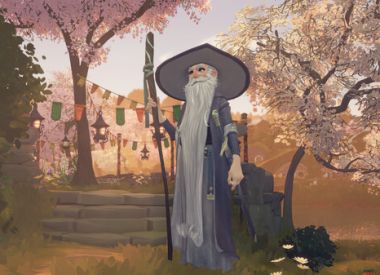“Indie” is a hard genre to define. To some, it’s a game made by one guy in his garage. To others, an indie can have a million-dollar budget and a full PR team. At TwitchCon 2017, gamers, streamers and developers gathered to celebrate the garage games, packed studio gems and one-off wonders that make the genre one of the fastest growing in gaming.
Andy Schatz, owner of Pocketwatch Games and creator of titles including Tooth And Tail and Monaco, has more than 13 years of experience working on smaller-scale games. He remembers when indie games were a lot easier to spot.
“Indie used to be a game that was an opposition in opposition of something, until the explosion of indie games in 2010,” Schatz told Player.One. “It was low-budget games made by a niche audience that were self-funded, made by an auteur or a small team that all felt personal stakes in the project.”
When Minecraft became a billion-dollar franchise, everything changed. Developers realized gamers wanted experiences that massive AAA game studios, beholden to cautious investors, couldn't produce. There was this “growing realization that the gaming public at large didn’t necessarily need the same polished experiences over and over, there was a need for variety, a need to take risks,” Schatz said. In 2010, the indie market boomed, and anyone with passion and an idea could make an indie game. If your idea was an action-arena game of flaming dodgeball with werewolves, then you’d be Lupinball creator Michael Ventnor.
Ventnor programmed and designed Lupinball by himself. For him, indie means working in your bedroom late at night, grinding away all your time because you believe in your project. He spent three years of his free hours, nights and weekends moonlighting on Lupinball.
“Game budgets have grown. You need much more money to make a game, making it kind of out of reach for those that are spending their free time or that are self-funded,” Ventnor said.
Joan Blachere, Communication Manager of Motion Twin and the developer of 8-bit action platformer Dead Cells, sees the definition of indie as something a little less abstract.
“For me, an indie game can’t have an enormous budget, and at its core is an artistic statement,” Blachere said. “You have to make the game before the business model. Money comes after the game. We see a lot of that today in the AAA world, indies get a lot of love for doing the exact opposite.”
Dead Cells started out as a browser-based tower-defense multiplayer game developed by a core team of six people. Two years ago, the team switched directions, disregarding popular trends to create a game everyone involved could be proud of. It’s an artistic identity embodied by games like What Remains Of Edith Finch and Bendy And The Ink Machine, a soul that’s impossible to capture when hundreds of employees work towards deadline after deadline.
At TwitchCon 2017, the future for indies looks bright as ever, thanks to new technology that makes it easier for everyone to create their own vision. Virtual Reality opened up new worlds for indie developers, allowing unique storytelling that once seemed impossible. Artists from all over media, film and television have shifted focus to VR, drawn to the medium’s many possibilities for innovation and creativity..
One of the strangest games at TwitchCon, Bebylon: Battle Royale, is a VR fighter where babies in giant slapping robots compete in gladiatorial combat. Designed by just four people at studio Kite & Lightning, the game attempts to answer the question, “what if we stayed young forever and needed to find new ways to entertain ourselves?”
Jennifer Chavarria, Head of Studio at Kite & Lightning, believes an indie needs a small team and should self-distribute. “Even if they have a seed fund or gather the money themselves, they want to create a product that will help VR reach the masses,” Chavarria said. “It’s a new movement that’s shaking up the indie scene right now. These are people that have a passion for creating a product with AAA assets.”
So, what is an indie game? Increasingly, it’s becoming a massive and multifaceted genre, from record-shattering releases like PlayerUnknown’s Battlegrounds to games carefully crafted in dorm rooms. At a time when microtransactions and season passes have become discouragingly common, it’s still amazing that anyone with enough ambition (and computer skills) can create something that might one day change the world.


















